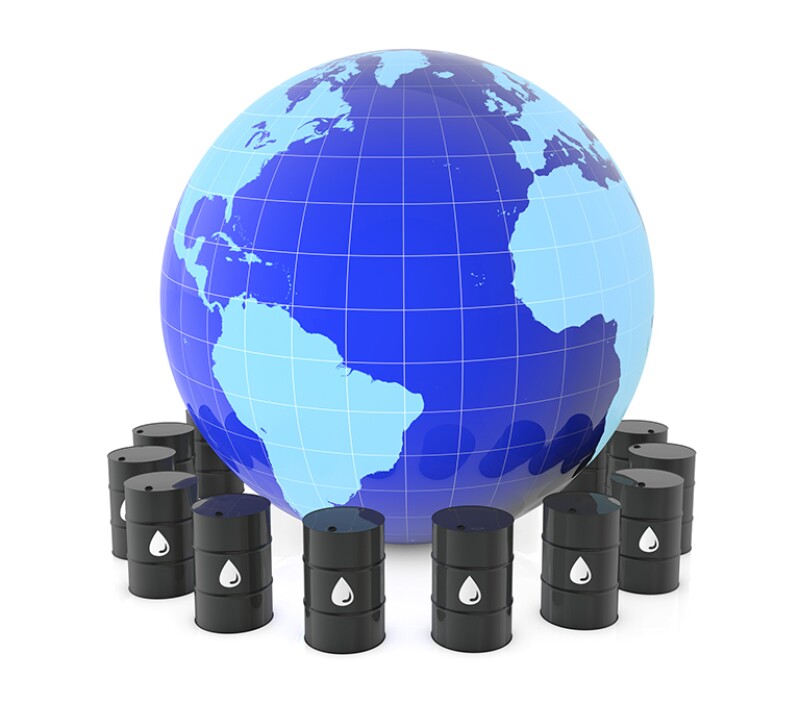The big oil producers are balancing the chasing of more production with delivering dividends to shareholders. So far, the scale is tipping in favor of shareholders.
While recent quarterly reports have made this clear, it was reemphasized at a US House Energy and Commerce Committee hearing in April when executives from Chevron, BP America, Devon Energy, ExxonMobil, Pioneer Natural Resources, and Shell USA addressed alleged “price gouging” at the gas pump and rejected pressure to shift their record profits from paying dividends and stock buybacks to ramp up production and lower prices.
The executives’ statements ranged from “We can increase production and return value to our shareholders” (Chevron CEO Michael Wirth) to Devon Energy CEO Richard Muncrief and Pioneer Natural Resources CEO Scott Sheffield stating “the answer is no” when asked if they would reduce buybacks and dividends. Gretchen Watkins, Shell USA president, said her company intends to make investor returns and increase production and investments in renewable energy.
Several of the executives pointed to their industry’s record losses during the pandemic when demand tanked (global fuel consumption fell by more than 25%) and West Texas Intermediate fell off a cliff to –$40/bbl on 20 April 2020 and slowly crept up.
Even if the oil price drops, retail gas prices won’t immediately follow to stem the allegations of price gouging. Garrett Golding, a senior business economist at the Federal Reserve Bank of Dallas, wrote, “In the energy economics world, this phenomenon is known as ‘rockets and feathers,’ where it is commonly observed that prices at the pump shoot up with oil prices like a rocket, but fall like a feather back to the ground after oil prices drop. There are two reasons for this scenario repeating itself during oil-price spikes: the macro‑level logistics of how oil and refined products churn through the physical market and the micro‑level economic decisions of service station owners and their customers.”
Today, demand is strong even at average oil prices of about $103/bbl over the past 6 weeks. Now, the summer driving season is around the corner and consumers are eager to hit the road and fly the skies, finally free(r) of pandemic restrictions and concerns.
Yet, the Permian rig count has remained fairly flat over the same period. Despite high oil prices (WTI just below $114/bbl on 17 May), drillers aren’t ramping up activity.
Many interrelated factors affect supply and demand. Simplifying the complexity of the global market shines, at best, a narrow beam on some of the factors affecting production.
The supply side is dealing with volatility of oil prices; the uncertainty of Europe’s energy supplies, including Europe’s potential embargo on Russian oil; the varied focus on energy transition; sustained fiscal restraint by smaller operators as they continue to reduce or avoid debt; the shortage of sand needed for fracturing in the North American shale plays; labor shortages; the reactivation of idled equipment; and supply chain disruptions.
A supply bottleneck is affecting oil country tubular goods (OCTG), which have seen volatility related to the “weak domestic demand in China due to COVID-19 lockdowns and Chinese currency depreciation,” wrote Rystad senior analyst Marina Bozkurt in a recent market note. Business activity has been affected by shutdowns and logistics problems. “OCTG prices may remain pretty high this year, driven by higher costs of raw materials due to geopolitical tensions globally and government regulations to reduce carbon emissions.”
Prices continue to increase at Japanese OCTG mills, where the focus is primarily on value-added products such as 13Cr material. Propping up prices are “tight global availability and strong demand. … Despite a possible price fluctuation for raw materials, prices will unlikely cool down significantly as long as the Russia-Ukraine situation continues.”
In an April report, the Federal Reserve Bank of Dallas said the growing gap between OPEC+ production quotas and actual oil production is being driven by production capacity constraints in several OPEC+ countries, largely attributable to Angola, Nigeria, and Saudi Arabia. Their capacity is limited by “infrastructure issues and the difficulty of attracting sufficient investment to offset production declines at existing wells.” The shortfall was nearly 1.1 million B/D in February, the most recent month for which there were official production data available.
In May, JP Morgan lowered its outlook for 2022 global oil demand by 1 million B/D, citing higher oil prices, a weakening growth outlook, and escalating geopolitical tensions. How this plays out will affect producers’ appetite to increase or decrease their production or reconsider their priorities.


